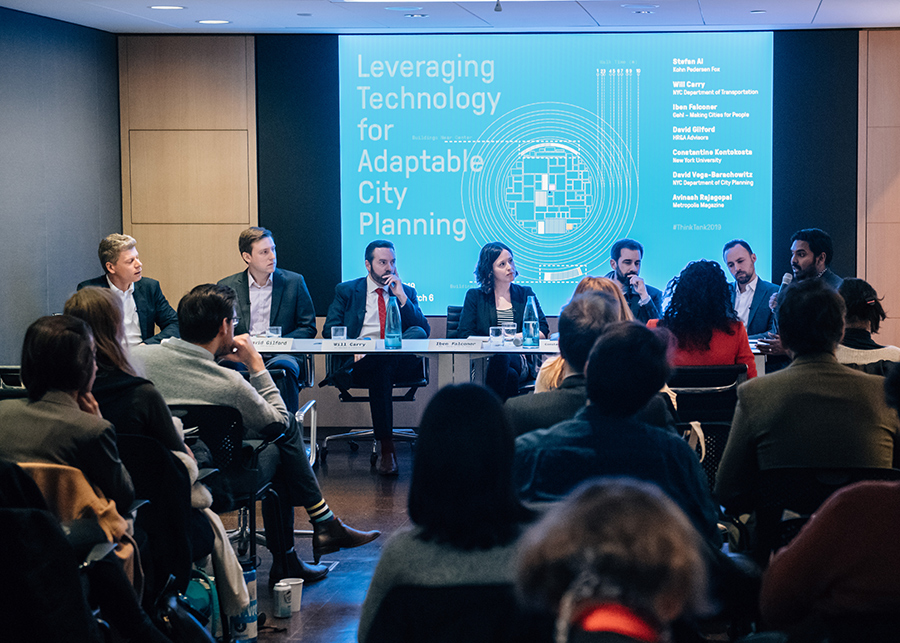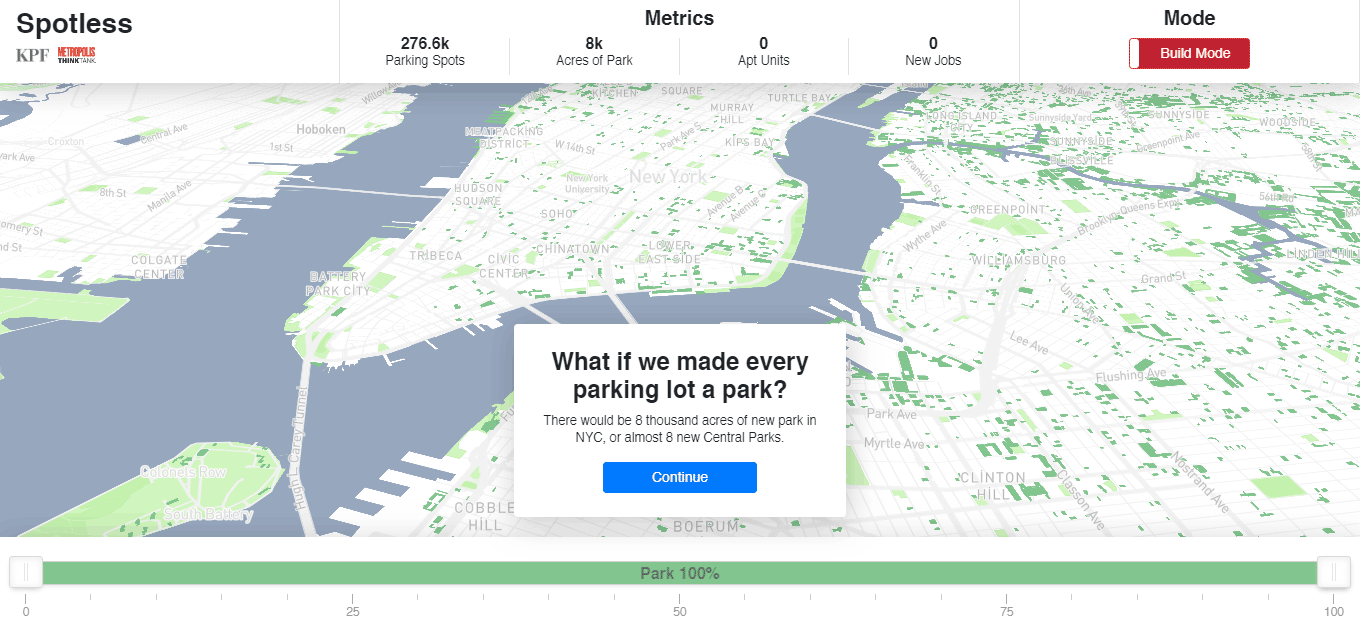Submitted by Elif Merve Unsal
KPFui introduces the new tool 'Spotless' to re-imagine the possibilities for a carless New York
United States Architecture News - Apr 23, 2019 - 19:59 13571 views

"Putting aside the ominous overtones that often color discussion of the subject, can data harvesting serve to strengthen the relationship between the public and the urban environment in which they live? Can data help urban designers and planners make positive—and more responsive—decisions regarding the spaces we all share?," said KPFui.
Kohn Pederson Fox’s Urban Interface Team (KPFui) leverages new thinking and technology in our professional practice, along with research collaborations with universities and government agencies, in the service of more livable, profitable, equitable and resilient cities.
On March 6, 2019, a Think Tank panel with planning experts, city officials, and architects from KPF was held to question how data is shaping today's urban planning and they introduce the Spotless app developed by KPF’s Urban Interface Team. The app simplifies the complex urban data and interprets them into visualization for the public.
"This is key," said Iben Falconer, the director of urban design firm Gehl. "You can gather all sorts of data, put all sorts of sensors out, but really the most useful thing is the interpretation of that data."

David Gilford, who is the principal of planning consultant HR&A Advisors, mentioned Sim City, open-ended city-building video game series, in reference to creating accessible tools and forms of media can provide insight into the complexities of urban design and help make city planning more responsive. "It had a real impact on this profession. What should we be creating today for kids who are thinking about the future of their own environment," Gilford added.
Stefan Al, senior mobility specialist at KPF described ‘Spotless’ as 'a game of Sim City with real-life consequences'. Spotless is a project that quantifies the potential of off-street parking. You can explore how New York City could adapt existing parking spaces to redevelop these parking lots into new parks or housing stock.
"In New York City, people spend a large portion of their time walking and one of the challenges that we continually face is to understand how pedestrians use urban space," said William Carry of the NYC Department of Transportation. "Despite new incoming data streams, so much of that data is still attached to a thing: car, bicycle, bus, train. What we are working on is how we can use these new technologies to really understand on a fine grain basis how people are walking," explained Carry.
"But creating a more responsive city is also about enhancing the quality of life. Without understanding the power structures, you cannot really understand urban development," said Constantine E. Kontokosta from the NYU Center for Urban Science and Progress.

The key to the design of buildings, neighborhoods or cities is communication and engagement with the client, city and public. KPFui develops tools that any individual can interact with, participating in the design and development of their cities and communities. They actively develop custom, web-based tools that bring the people back to what’s smart. It looks like KPFui will bring more tools into table to question data-driven design.
You can check Spotless App here. Use the sliders to explore how NYC could adapt existing parking spaces to create 8,000 acres of new parks (almost equal to 8 new Central Parks) or 3.1 million new apartments (almost double the housing stock).
All images © KPF
> via Metropolis
